Cheap log potentiometers are a trick. In fact, lot of cheap log pots aren't actually log at all - they're linear pots with an ordinary resistor attached to create the effect of a log pot. This saves the manufacturers a lot of money, because they produce almost exactly the same product for both the linear and log pots, and just solder a resistor in there on the log one.
Another method of producing cheap log pots is to use two materials of different resistivity to produce a rough log-shape resistance graph. This, again, is pretty inaccurate and only gives you a rough log shape.
True log pots use tapering to turn a single fixed-resistivity material strip into a logarithmic resistance source. Resistance can be calculated as the following:
$$R = \rho\frac \ell A$$
where R is resistance in Ω, ρ is resistivity in Ωm, l is length in meters, A is cross-section area in m2.
So, if you have a strip of material with a fixed area and fixed resistivity, resistance is directly linearly proportionate to length, giving us a linear potentiometer. In order to make a true log potentiometer, we need to have one of these variables change over the length of the material.
The easiest method is to have the area change over the length of the material. This can be done by simply changing the height of the material and keeping the depth fixed. The height of the material isn't directly proportional to log because the height of all points previous to it have to be taken into account too. It's relatively easy to calculate the required gradient at any point by doing some calculus, but I won't cover that here.
Of course, anything that involves extra work will increase the price of production. Creating the curved material requires a CNC milling machine (or similar) to produce the curve, and involves more waste than perfectly flat circles.
As I mentioned in an earlier comment, all of this doesn't particularly matter for most purposes. Controlling audio volume only requires that the perceived volume gradient is linear. We're also very good, as humans, at "faking it" by physically compensating for fluctuations when manually altering volume.
